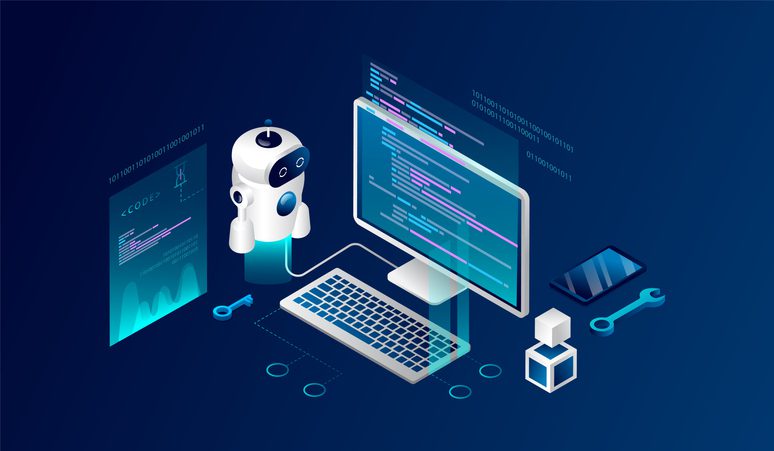The term “bot” is frequently used when talking about online applications, but many people don’t know what bots are, how they work and whether bots are good or bad. The word ‘Bot’ is any piece of software that performs automated, repetitive tasks. Usually, they carry out a job that would be done manually by human users. The benefit of bots is that they are much faster at completing tasks than humans, and they don’t require much management or overhead.

There are countless types of bots designed to perform all sorts of tasks. However, bots are used for malicious purposes too, such as launching automated attacks. Bot-driven automation is cheap, easy to use, and provides the scale necessary to make attacks profitable.
Having a bot mitigation strategy in place is essential to prevent bots from interrupting the function of a site, scraping content, and committing fraud.
The Good: Different Types of Useful Bots
When we think of bots in cybersecurity we often think of malicious bots. But, bots were initially created to automate tasks on our computers and online applications. Even though you may not realize it, bots are always running in the background, carrying out tasks and ensuring that everything runs smoothly. In fact, around half of all internet traffic is just bots going about their business. There are a number of different types of bots used for a variety of tasks. Keep in mind that the “good” bots can still be exploited and used by bad actors and used for malicious purposes.
Chatbots

Most people have come into contact with chatbots, or customer service bots, at some point. Many companies have them on their websites, and they are designed to provide a level of customer service by answering questions in a chat window. As technology improves, these bots will become more difficult to distinguish from a real person.
Businesses often use chatbots because they improve the user experience by quickly answering customer questions. They aren’t great at answering complex questions, but they can deal with a lot of basic queries that could otherwise take much more time to answer by a support representative.
Shopping bots
The way we shop online is dictated by bots in a big way, even if you don’t realize it. Often, when you go on an eCommerce site, it will be personalized for you, showing products you are more likely to be interested in. They may also remember your browsing history and make suggestions for you. All of this is carried out by bots that monitor your online activity and then make changes to the site based on the collected information.
Shopping bots can also help find the best prices. Some great comparison sites use bots to scan a large number of websites and compare all of the prices, helping you find the best deal.
Web crawling bots
When you Google search, web crawling bots (sometimes called spider bots) get to work. Web scraping crawlers scan websites looking for keywords and relevant content to determine which websites most likely interest the user. This is how the search results are ranked and categorized before they are displayed to you. Marketing professionals have a keen interest in these bots, and are constantly trying to improve their content so crawlers will recommend their site at the top of the search result.
Web scraping bots
Web scraping bots work by scanning website content and saving it offline so it can be reused in the future. In some cases, these bots catalog website content that they have permission to store, but they can also be used by threat actors or competitors for malicious purposes such as web scraping fraud by scraping prices, images, or other data to be used to undercut prices or create counterfeit sites.
Social media bots
Social media bots are a good example of a type of bot that operate in a gray area. They can be used to send out mass communications updating followers on breaking news without human oversight, but they can also mimic a person on social media through automatically sending messages and following people, as well as create fake accounts. In some cases, these are used for positive purposes, but social media bots can also spread misinformation or enact scams on unsuspecting users.
As social media platforms have become more aware of the potential dangers of social bots, they are putting defensive measures in place to identify and stop them.
Monitoring bots
Monitoring bots help websites identify maintenance issues and prevent bot attacks. These bots will monitor the health of the system and then flag any problems. Some sites use these bots to let people know if a website is down or experiencing an issue. Monitoring bots are not just for websites; they can be used on various pieces of software to troubleshoot problems and keep the software running as it should.
It’s likely that you have benefitted from some of these bots, but there are also a lot of downright malicious bots out there that you need to watch out for.
The Bad: Different Types of Malicious Bots
As we mentioned, threat actors leverage bots to launch attacks at scale, increasing the profitability of their efforts, adversaries primary incentive is money, making cheap, easy to use, and highly effective bots their favorite tool. Fortunately, bot detection and mitigation solutions can help you prevent automated threats, but it’s a good idea to familiarize yourself with the various types of attacks bad bots are used for and the potential damage they could cause to your online business.
Credential stuffing bots
Credential stuffing is one of the most common automated threats online businesses face. Attackers use bad bots to takeover user’s accounts. Attackers do this by having bots l automatically input known username and password combinations that have been leaked from a data breach or purchased on the dark web until they are able to get into the account. Successful credential stuffing is often a direct result of reusing usernames and passwords across multiple account types.
These malicious bots can lead to account lockouts, financial fraud, fraudulent purchases, stolen loyalty points, and an increase in customer complaints and therefore a negative impact on brand reputation.
Click fraud bots
Click fraud bots scan websites and repeatedly click on paid ads, costing organizations a lot of money. The downside to this malicious bot activity is that click fraud can eat up the majority of an advertiser’s marketing budget and throw off ad performance reporting. Without a good bot detection system in place to protect against this bot behavior, this can go undetected and be incredibly damaging for businesses.
Spam bots
All of those annoying spam emails you get probably come from bots. Spam bots will scan contact and guestbook pages online to harvest emails. They will then automatically send out huge numbers of spam emails to all of their collected addresses. Spam bots can also be used to fill forms, send out SMS or text messages, and post promotional content in forums to boost traffic to certain websites.
DDoS bots
A distributed denial of service (DDoS) attack can completely shut down a website by bombarding it with huge amounts of traffic that it cannot handle. Bots are used to constantly attempt to connect to the website until it crashes completely. An application DDoS leverages bad bots to issue targeted application requests that appear legitimate, such as search queries and other computationally expensive tasks, making them exceptionally tricky to detect and stop. DDoS is one of the most common forms of cyber attack that there is, and it can seriously disrupt business operations.
Denial of inventory bots
Bots can be used to carry out denial of inventory attacks on eCommerce sites. The bots will keep adding products to their basket without completing the transaction in order to prevent legitimate customers from purchasing the product. Then, when a genuine user attempts to buy the product, it will look as if it is out of stock, even if it isn’t. When these kinds of attacks go unnoticed for a while, they can cause a massive loss in eCommerce sales.
Sneaker bots/scalper bots
Another incredibly common application of bots are sneaker bots or scalper bots. Unlike denial of inventory bots, scalper bots do actually buy products, but they do so at record speed, faster than their human counterparts. Attackers use these bots to purchase in demand items like limited edition sneakers, the hottest holiday gifts, or the latest concert tickets.
Due to the bot’s speed and the massive amounts of requests attackers make, most of the inventory goes to the attackers, leaving real customers empty handed. Attackers will then either keep the items for themselves or sell the items at massive markups to the real customers that attackers beat out in the first place. Causing massive reputational damage to the company in the process. The rules and regulations for scalper bots can differ from country to country.
The Ugly: Malicious Bots that Mimic Human Behavior

While there are endless types of malicious bots, there is also a varying degree of sophistication. The more motivated the bot operator and the more valuable the target, the more likely they are to use open-source developer testing frameworks and stealth plugins that fly under the radar of detection systems by looking and acting like human traffic. Bots can look like humans by hiding behind residential proxy networks, so their traffic blends in with normal traffic with legitimate IP addresses. In addition, bad bots can act like humans by replaying human movements such as mouse clicks.
Examples of the open-source DevTools bot operators use to script their malicious automation include Puppeteer and Playwright. Bot builders use these tools to develop bots that can bypass anti-bot systems. For example, Puppeteer Extra Stealth has enabled many automated attacks to evade traditional bot mitigation solutions. Bot operators have designed advanced scripts, built-in advanced code improvements, and CAPTCHA defeating modules that cannot be detected by many bot management technologies.
How to Protect Your Organization from Malicious Bots
Having a good understanding of the types of bad bots that target your online business help you effectively protect your organization against automated threats. Using superior bot mitigation from a provider like Kasada enables you to focus on innovation while your bot mitigation partner keeps bad bots out and allows good bots to do their jobs.
Next-generation bot mitigation solutions effectively detect and stop the most sophisticated bad bots. For example, web scraping is especially difficult to defend against, as it requires detection on the very first request before the scraper bot can receive what it’s looking for. On the other hand, scalper bots require a massive scale to secure hype and in demand products.
Kasada stops advanced persistent bots by identifying the presence of automation whenever they interact with your websites, apps, and APIs rather than using outdated detection methods, like CAPTCHAs, IP based blocking, and digital fingerprinting that must let bots into your infrastructure first to identify bad behavior and are easily evaded by bad bots.
Kasada bot defense deters bot operators from coming back by making reverse engineering and retooling attempts difficult and expensive through highly obfuscated code and constantly rotating sensors that look for different signs of automation on every request. Slowing down attacker’s development, iteration, testing, and compute cycles – making future attacks too expensive to conduct at scale.
Implementing modern bot detection and mitigation has a material financial impact on your business. In addition to the security impact of real-time protection from automated threats, eliminating bad bot traffic directly impacts your bottom line by improving website conversions, significantly reducing unnecessary infrastructure and operating costs, and providing a frictionless customer experience. Contact Kasada today to start to protect your critical data from malicious bot traffic.




